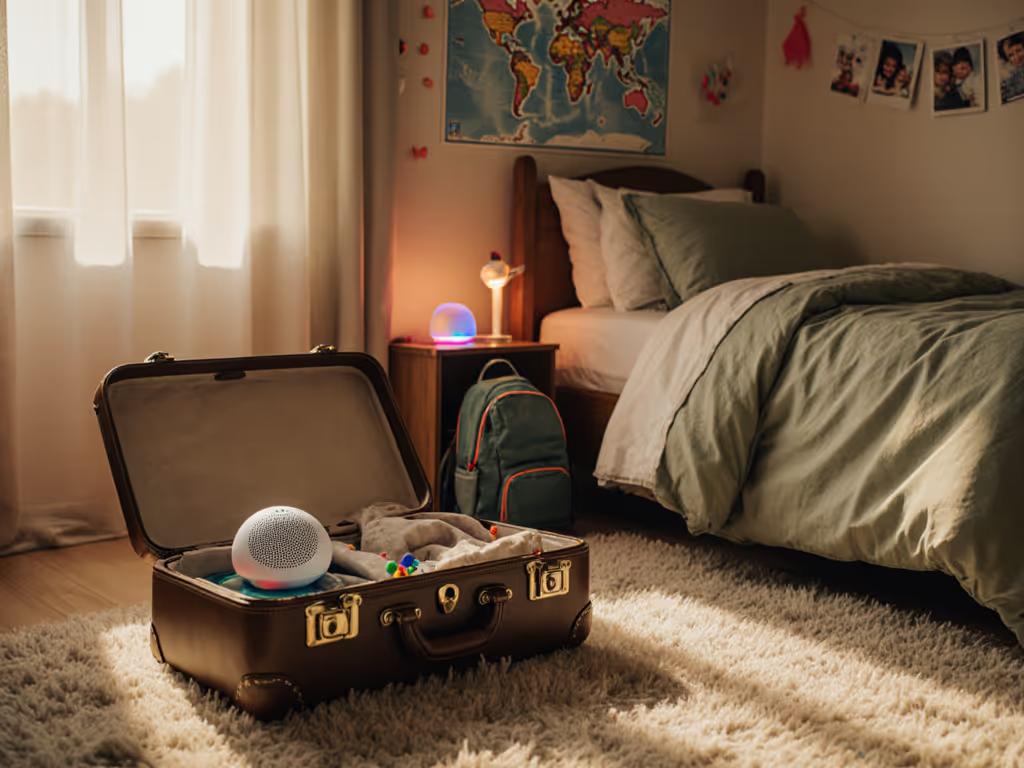
Safe Sound Machines by Age: Newborn to Toddler Guide
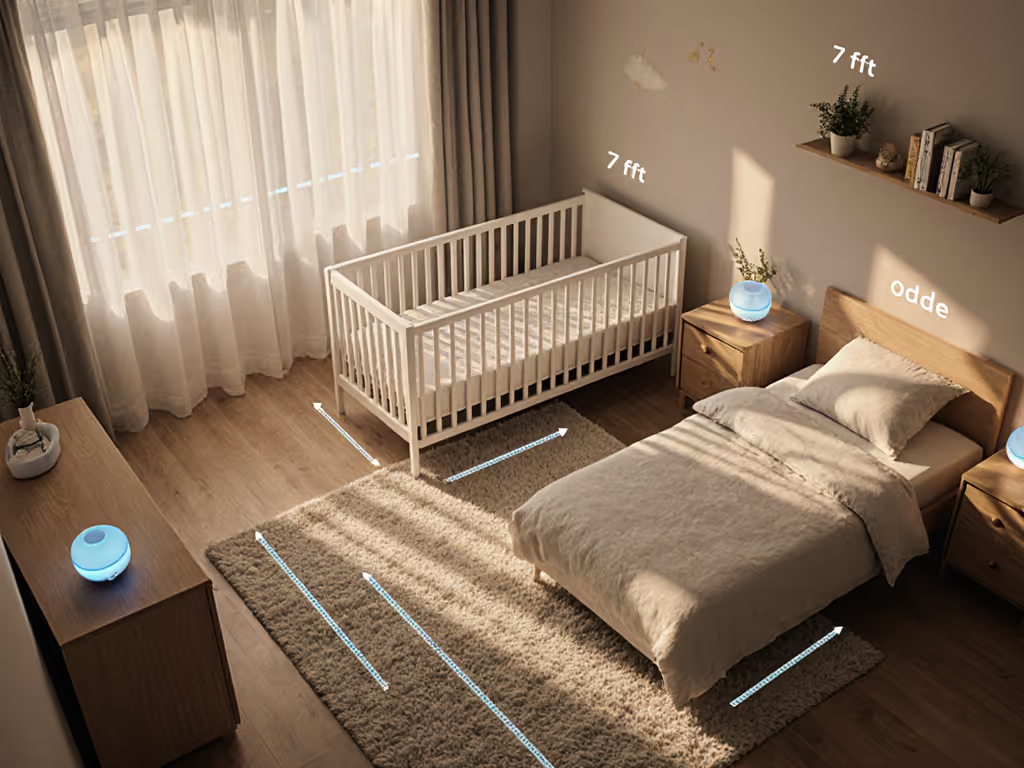
Choosing the right sound machine by age transforms infant sound machine anxiety into confidence. Forget one-size-fits-all advice, your baby's evolving needs demand room-specific strategies backed by lab-tested safety. As a parent who's carved quiet corners in humming hotel rooms with nothing but painter's tape and a travel diffuser, I know how chaos becomes calm through measured settings. Let's cut through the confusion with pragmatic, age-tuned steps.
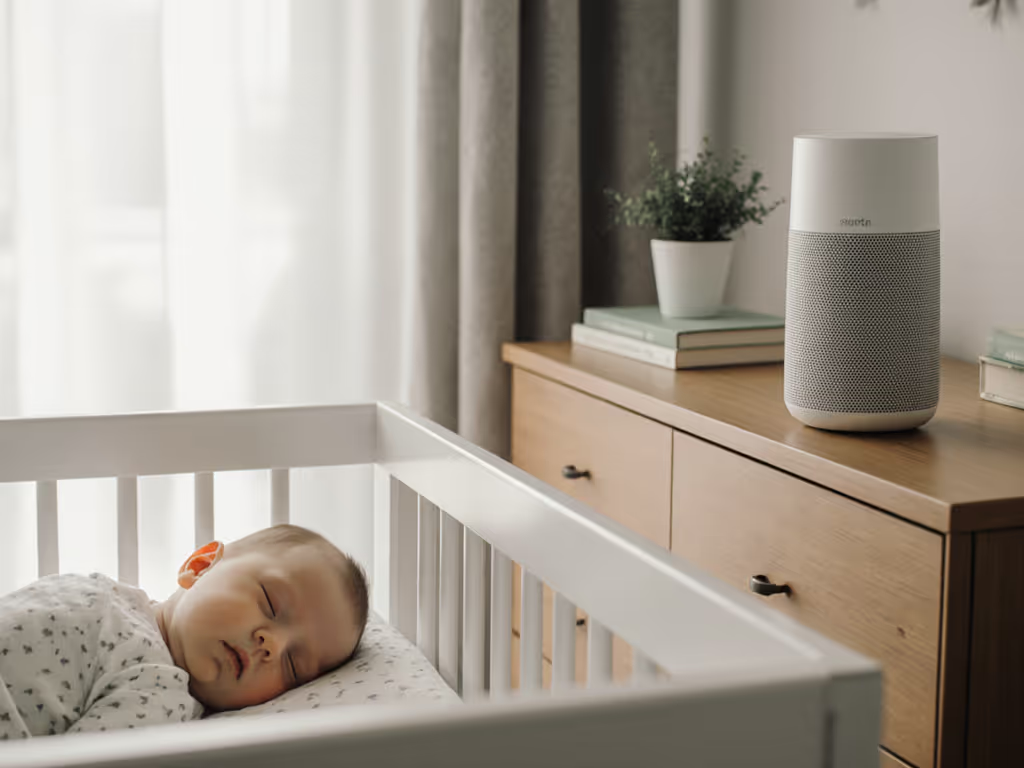
Why Age Matters: Developmental Stages Sound Like a Symphony
Sound needs shift dramatically as babies grow. Newborns hear muffled rhythms from the womb; toddlers process complex noises while navigating independence. Generic advice ("just play white noise!") ignores this reality. For a quick primer on choosing safe sound types, see our noise color guide. Developmental stages sound like distinct instruments, each requiring precise tuning. Here’s how to match your machine to your child’s phase:
1. Newborns (0-4 Months): Womb Echo, Not Wall Noise
- Core Need: Mimic the constant 80-90 dB internal sounds of the womb (heartbeat, blood flow), not external noise levels. Silence feels alien.
- Safe Setup:
- Place: At least 7 feet (200 cm) from the crib, across the room, not on the nightstand. This keeps sound at 50 dB at baby's ear (per AAP/CDC guidelines), like a soft shower. Measure with a free app like NIOSH SLM, but verify distance first.
- Sound: Steady pink noise (softer highs than white noise) at womb-like frequencies (50-500 Hz). Avoid harsh tones, babies hear higher frequencies more intensely.
- Volume: Start low (45-50 dB). If barking or sirens pierce through, move the machine farther first before raising volume. Your goal: mask disruptions without overwhelming delicate ears.
- Pro Tip: Use painter's tape to mark the exact placement spot on the floor. Reset takes 10 seconds anywhere.
Familiar wins over fancy. A $20 machine placed correctly beats a premium unit blasting from the crib rail.
2. 6-12 Months: Battling Regressions & Rolling
- Core Need: Consistency during sleep disruptions (teething, mobility milestones). Sound must cover mid-frequency chaos (slamming doors, sibling play).
- Safe Setup:
- Place: Same 7-foot rule, but recheck after baby rolls. A crawler might reach a too-close unit. Anchor cords with tape.
- Sound: Broad-spectrum brown noise (stronger low-end rumble) to mask traffic and street noise. Volume still at 50 dB at crib. Translation: If you need to raise your voice 3 feet from the machine, it's too loud.
- Consistency: Use identical settings day and night. Babies this age link sound to sleep context. Change only when truly needed (e.g., moving to a noisier apartment).
- Pro Tip: During regressions, add one element: a 46 dBA machine (like those tested in NICUs) set to "rain." No louder, just different enough to re-anchor their focus.
3. 12-24 Months: Shared Rooms & When to Stop White Noise
- Core Need: Balancing toddler independence with sibling or parent noise. When to stop white noise isn't about age, it’s developmental readiness.
- Safe Setup:
- Place: In shared rooms, angle the machine away from the older child's bed. Test: Can you hear TV or babbling from the crib? Adjust until only the infant's zone is covered.
- Volume: Never exceed 50 dB at any sleeper's ear. Use multiple budget units (placed safely) instead of overdriving one.
- Transitioning: Start only if your child sleeps 10+ hours consistently without waking to noise. Reduce volume by 5 dB weekly or shorten runtime (e.g., off after 45 mins). No abrupt stops.
- Pro Tip: For room-sharing, pair sound with a visual cue (e.g., dim red night light only during sound hours). Toddlers grasp routines faster when senses align.
4. Travel & Tight Spaces: Your Portable "Two-Minute Room Reset"
Thin-walled hotels and relatives' homes amplify noise vulnerability. But bulky machines fail here. Your kit needs:
- Battery power (no outlet hunting)
- Consistent sound signature (no jarring shifts between home and travel units)
- Tape anchors (secure units to dressers without damage)
Pack these in a dedicated pouch:
- Palm-sized sound machine (max 4" tall)
- Rechargeable battery pack
- 2"-wide painter's tape roll
- Compact travel diffuser (for scent anchoring)
Execute your reset: Tape the machine high on a wall opposite the crib (7+ ft), set to 46 dBA pink noise, diffuser on low. Done. This is how I tamed that Chicago mini-fridge. Portable, repeatable settings turn chaos into rest, no promises, just proven parameters.
Your Actionable Next Step: The 5-Minute Safety Audit
Don't overthink. Do this tonight:
- Grab your sound machine and a phone.
- Place the phone where baby's head rests. Open a decibel app.
- Run your machine at typical volume. Note the reading.
- Above 55 dB? Step away until it hits 50 dB. Mark this spot with tape.
- Below 45 dB? Move closer only if neighborhood noise still wakes baby.
- Check the sound profile: Play it near your ear. Any harsh "hiss" or sudden clicks? Switch to pink or brown noise.
- Measure distance: If under 6 feet, relocate now. Safety isn't negotiable.
This isn't about perfection, it's about precision. You've already mastered the hardest part: loving a tiny human through sleepless nights. Now arm yourself with repeatable settings that prioritize safety and sanity. Pack light, measure once, repeat. Familiar wins over fancy every single time.
Related Articles

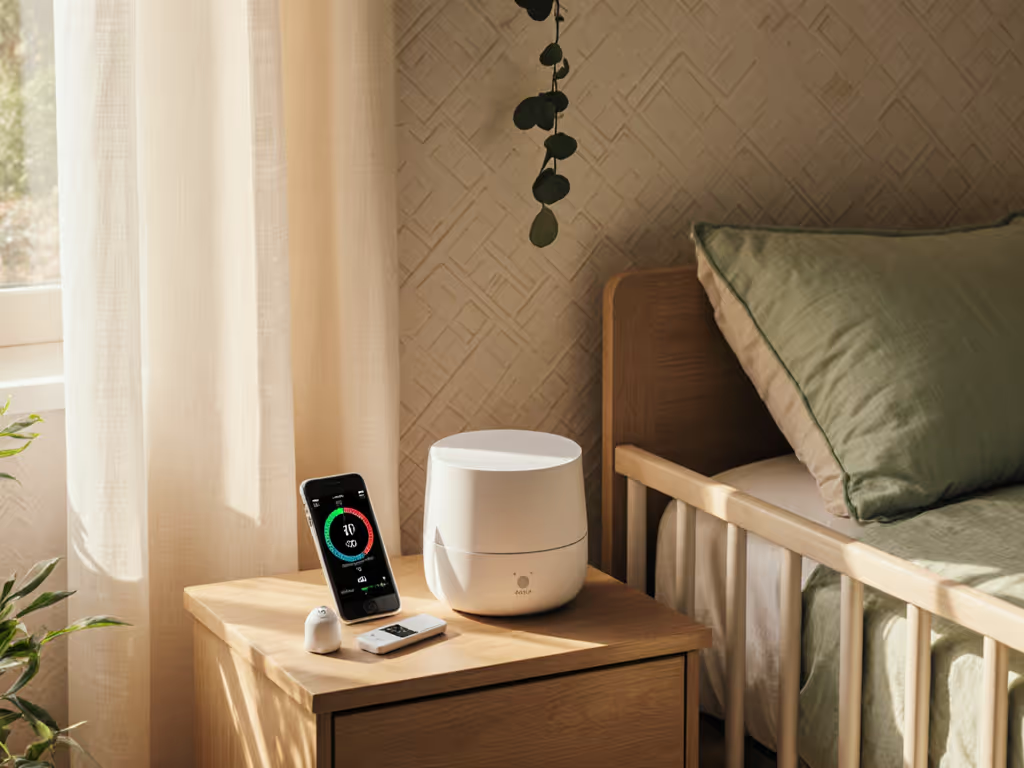
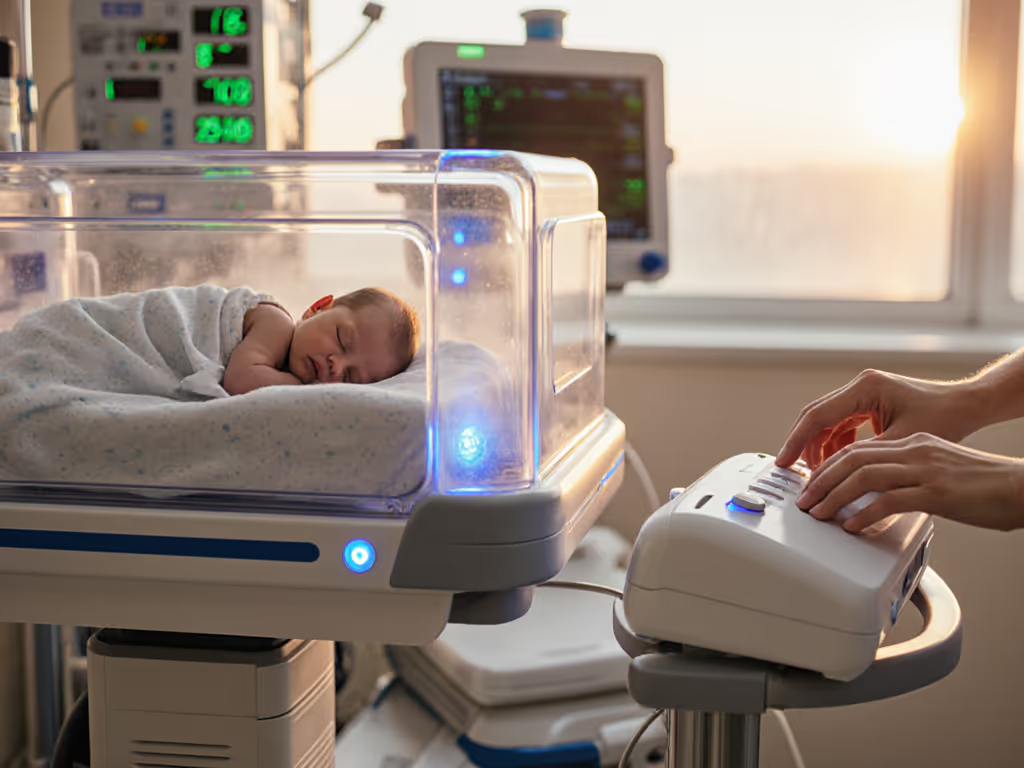
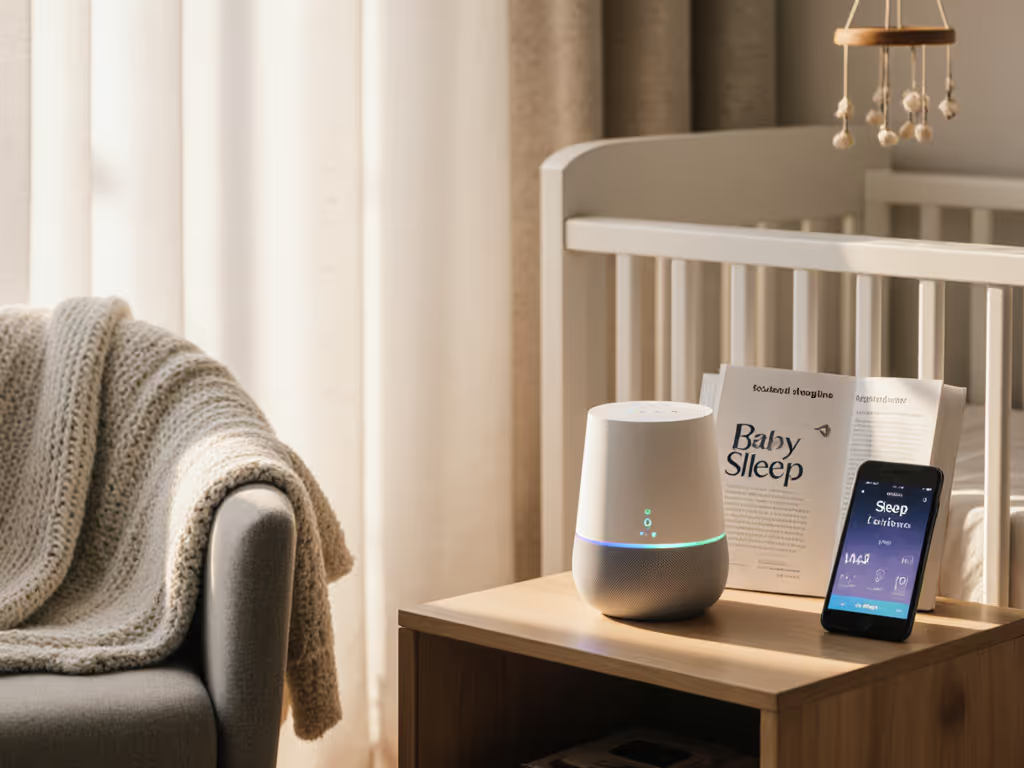
Infant Sound Machines: Lab-Tested for Safe Sleep
Get lab-verified guidance to choose and place a baby sound machine that meets AAP noise limits, avoids light and loop pitfalls, and favors tactile controls to prevent wakeups. Includes tested picks and simple setup targets for safer sleep at home and during travel.
